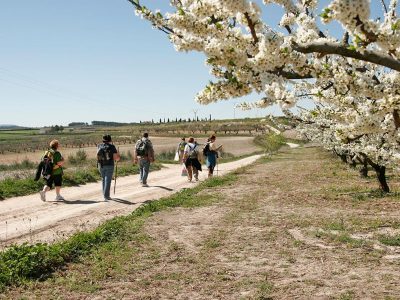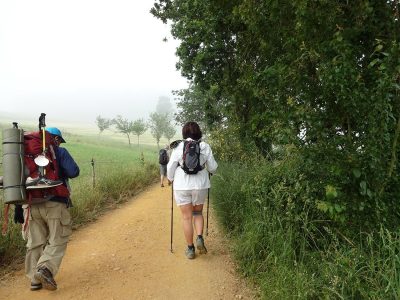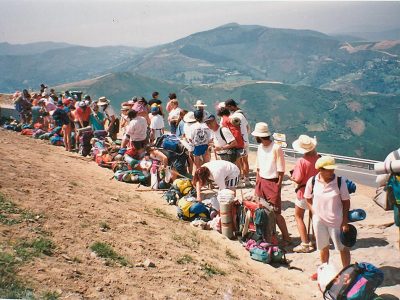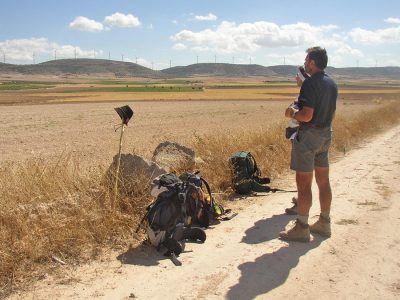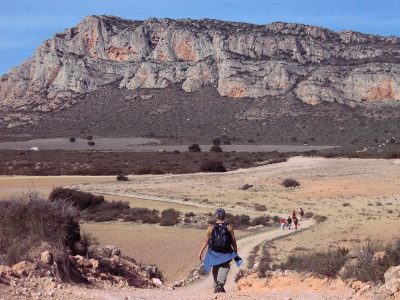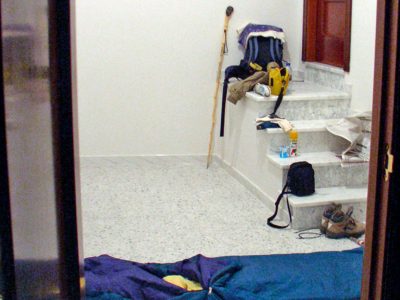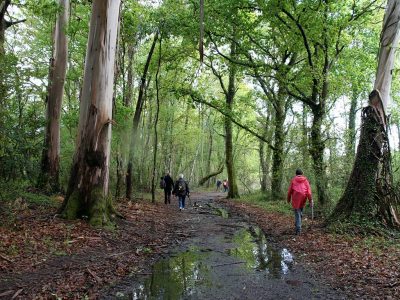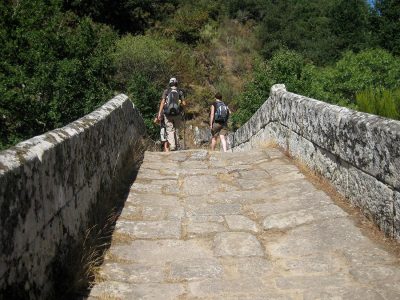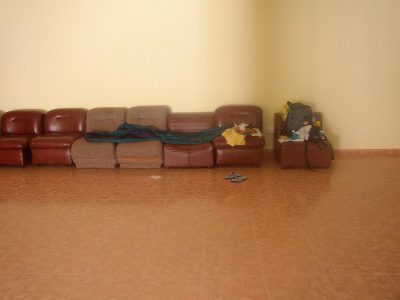Helpful Tips
A series of practical tips will not hurt all those who want to approach Santiago through this long route, which has the advantage of solitude and immensity. Comfortable footwear for walking is essential.
It is convenient to wear sneakers or boots, lightweight (i.e., not heavy) as well as breathable, with an air chamber or other cushioning system, which fits well in the instep so that the foot does not slide, and wide enough to keep the toes free. The size should be a number or number and a half greater than the usual footwear, where the foot is comfortable once the footwear is well tied.
It is necessary to train, at least one month before starting the trip, especially if you are not used to walking, with the same footwear you are going to wear. It should be done at a fast pace, about 2 or 3 hours each day, which is equivalent to 12-15 km. This, which is little compared to what will be done on the road, allows a certain training of the legs and maintenance of a rhythm. All tricks work. For example, walking with a cuff of one kilo on each ankle allows a little muscular legs and one has the feeling of flying when you are free of it.
Being informed about what you are going to do has the advantage of being able to plan the stages, not only according to the kilometres, but also according to the cultural interest that the different villages may awaken.
The backpack must be chosen with care so that it is more a help than a load. It must weigh little, adapt well to the body, fit at the waist and chest and, if possible, also have tensors between the sack and shoulders so that the load does not pull you to the ground. When full, it should not exceed 10% of your maximum body weight. In order for this to happen, you have to choose your clothes very carefully, according to their weight rather than their attractiveness; if you can combine the two things, so much the better.
The wardrobe does not need to be very abundant: take off and put on. To be able to be all cotton. A pair of shorts, three t-shirts, two sets of underwear, three pairs of cotton socks, a skirt or long trousers (never jeans, because they are heavier) for when you stop walking; a thick sweater or polar lining, a rain cape that does not weigh, rubber sandals for the shower, powder detergent for washing (without the cardboard box); a string to hang out the clothes, safety pins instead of tweezers, and hat or cap. You shouldn’t be afraid to get cold, because you always have the option of putting on everything you wear, if necessary.
Don’t forget the toiletries, but only the most essential as there will be no time or desire for beauty routines. Always try to provide yourself with samples, who hasn’t got a friendly pharmacy nearby, since they weigh less and you can throw away the containers: toothpaste and toothbrush, bath gel, nail clippers, comb, tweezers, non-electric razor. No need to fill up with creams, just one for the sun and a moisturizer. Two towels or a “pareo”. A roll of toilet paper: it serves as a paper, a tissue and a napkin, and can be replaced anywhere.
The first-aid kit you need is far from being a mobile pharmacy. It is convenient to take some analgesic in case you have some important pain, such as paracetamol; an anti-inflammatory in ointment, spray or gel, in case you have tendinitis or a tug that prevents you from walking; good quality plasters; a needle of the vein only for your personal use, which you can use to prick the blisters if you get and scissors, if you have to cut something. A word of advice: if you get a blister, don’t do what the “experts” say. It’s about walking, not doing penance. The ampoule can be punctured with the injection needle (no, sewing) in several places and emptied with the help of a piece of paper, never cut the skin and try to stick it well with a band-aid so that it does not move. If the ampoule is large or in the support zone (plant, heel), or in the rubbing zone, use a dressing of hydrocolloid gel, Compeed or Hansamed, which relieve the pain.
Other useful items are: a camera/mobile phone, a notebook and a pen. Nor will you have a bag for dirty or damp clothes and a list of shelters where you can spend the night. Don’t forget to provide a bag to collect your waste and transport it to the nearest container.
Along this route it is obligatory to always carry water, in case there is no fountain or it is hot, but do not load yourself with provisions. Buy the day before for breakfast and lunch, since you should not walk without something in your stomach, but reserve the strong food for when you finish the stage…
Always remember that the number of ampoules is directly proportional to the number of kilos of the rucksack and the type of footwear. If you have to walk a lot and your feet sweat, make a stop on the way and change the socks for some dry, hanging the others in the backpack if you need them later.
It is advisable to start walking very early in the morning, as soon as you can see where you step: it is less hot, you get tired less and you have more time to enjoy the scenery and the countryside. If you are old enough or suffer from some kind of illness or are taking drugs chronically, be prudent: get up early to get going, rest at the hours with the most sunshine, adjust your weight to your possibilities and don’t be reckless. The Pilgrim’s Way to Santiago, whatever itinerary you choose, will provide you with a new life experience and this will be your challenge.
When you arrive in Santiago you will realise that the Apostle has served as a pretext to get closer to the people and get to know you a little better.

